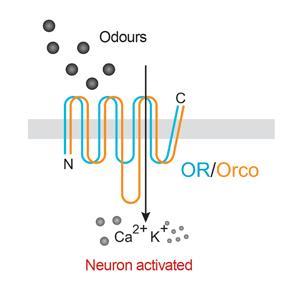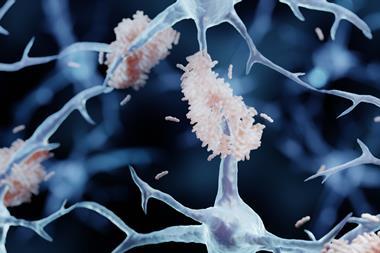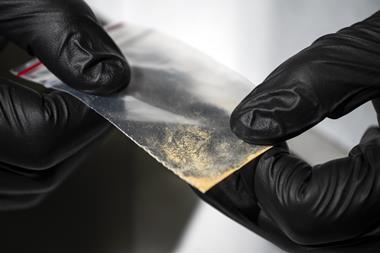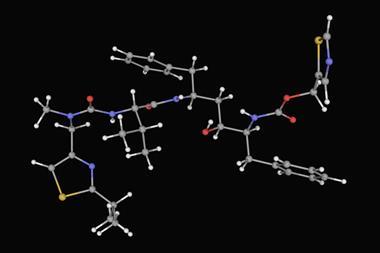Uncovering how mosquitoes sniff out their human victims may lead to new tools to conquer malaria and dengue fever. Emma Davies reports
A child dies every minute from malaria in Africa, according to the World Health Organization. The disease is spread by mosquitoes, and so far the most effective way to minimise its devastating effects is the use of strong pesticides, including dichlorodiphenyltrichloroethane (DDT), which is listed as a persistent organic pollutant by the Stockholm Convention.
Anopheles gambiae is the species of mosquito that carries the Plasmodium parasite that causes malaria, while Aedes aegypti hosts the dengue virus, which is a growing problem. Worryingly, the malaria parasite has begun to develop resistance to currently available insecticides, and antimalarial drug resistant strains are predicted to spread.
Recent advances in genetics and sophisticated analytical techniques have led to giant leaps in understanding how mosquitoes find their human hosts. Shining a light on these complex sensory pathways brings the possibility of designing more effective mosquito repellents and attractants (for luring into traps).
Sniffing us out
Mosquitoes have a major weakness that can be taken advantage of: a reliance on a sense of smell to hunt out human blood. Carbon dioxide is a key attractant. If a blood-hunting mosquito senses a plume of the gas, it will rapidly follow the trail to a human source, aided by body heat and chemicals in sweat and skin, such as 1-octen-3-ol and lactic acid.
They are superbly equipped with sensory equipment to sniff us out. On their heads are two pairs of highly sensitive organs: long, feather-like antennae and shorter protruding structures called maxillary palps. The antennae and palps are both covered in sensory hairs called sensilla, each of which contains olfactory nerve cells or neurons that send signals to the mosquito brain. These neurons contain proteins activated by specific chemicals called olfactory receptors.
Much of the understanding of mosquito sensing has come from work on the fruit fly Drosophila, the genome of which was famously sequenced in 2000. Mosquitoes are now known to have three types of olfactory receptors that respond to chemicals: odorant receptors, gustatory receptors and ionotropic receptors. The odorant receptors, also known as tuning receptors, are tailor-made so that specific chemicals – such as esters, aldehydes, ketones and alcohols – can bind to them. The gustatory receptors in maxillary palp sensilla are activated by carbon dioxide, giving mosquitoes the ability to detect the gas in human breath from over 30m away. The ionotropic receptors are not so well characterised but it is thought that they sense volatiles such as carboxylic acids, ammonia and amines.
Causing confusion

Most of the olfactory neurons express one of 131 odorant receptors, which work in partnership with an olfactory receptor co-receptor (Orco). Importantly, Orco controls the movement of odorant receptors to the sensory membrane of the neurons so that they can get to work hunting out odour chemicals. The odorant receptors and Orco together form odour-gated ion channels, which open when receptors are activated, to allow ions to flow, thus sending signals to the brain.
‘The Orco co-receptor is one of the most extraordinarily conserved proteins that we see in nature,’ says Laurence Zwiebel, a molecular entomologist from Vanderbilt University, Nashville, US. ‘If you design a drug or a chemical against a tuning odorant receptor, it is only going to work for a limited number of species because they are very different. Orco is identical in every insect. It is a target that is insect-specific and is not found in any other animal.’
In work part-funded by the Bill & Melinda Gates Foundation, Zwiebel’s group has been identifying chemicals that target Orco. In 2011, Zwiebel and his colleagues used genetic engineering to insert mosquito odorant receptors into human embryonic kidney cells and then screened them against a commercial library of over 100,000 small molecules normally used in drug development. One compound, now named Vanderbilt University Allosteric Agonist or VUAA1, stood out.1
‘Since then we have improved VUAA1 a little. It is still the only known agonist for Orco,’ says Zwiebel. He describes the molecule as a ‘confuser’ rather than a repellent, since the mosquitoes will still pick up other signals such as body heat. ‘Imagine that I am shouting into the phone at you. Even though your vision is functioning and even though you can smell, the fact that I’m shouting will repel you,’ he says. ‘The behavioural response to that overstimulation, whether that’s me shouting down the phone at you, or getting in an elevator with someone who’s wearing way too much perfume, is: I want to leave.’ The aim is to design a new generation of repellents based on overloading the olfactory system. ‘We know that VUAA1 has the ability to turn on odorant receptors in every insect we have tried, not just mosquitoes,’ says Zwiebel.
As far as the Bill & Melinda Gates Foundation is concerned, a successful product would also need to be a money-spinner for industry. A chemical like VUAA1, which could potentially repel all insects, would undoubtedly hold industry appeal. The profits would then ensure that the product could be provided at little or no cost for malaria prevention, explains Zwiebel. First, VUAA1 needs to undergo toxicity tests. Product development scientists will also need to work out how to formulate the compound to make it efficacious in a spray, he adds.
Untangling relationships
Other groups are focusing on improving our understanding of the Orco receptor itself in a bid to reveal a mosquito’s tricks. Because Orco is always found in a complex with the odorant receptor proteins, it might be expected that mosquitoes lacking the co-receptor would be unable to sense their prey.
To test whether this holds true, neurobiologist Leslie Vosshall’s team at Rockefeller University in the US, has created and studied the dengue virus carrying A. aegypti mosquitoes with mutant Orco genes.2

The isolated neurons no longer responded to odour chemicals such as 1-octen-3-ol and when mutant mosquitoes were presented with the stark choice of a nylon stocking infused with human body odour or an untreated one, they showed no real preference. In the presence of carbon dioxide, however, the mosquitoes were drawn to the smelly stockings, suggesting that the activated carbon dioxide receptors somehow prepare the mosquito for sensing other chemicals.
To delve further into the complex relationship between the receptors, Vosshall’s team has also created mosquitoes with a mutated gene in the carbon dioxide receptor complex. As expected, the mutation caused the maxillary palp neurons to fail to respond to the gas. The mutant mosquitoes did not have the same reaction to body heat as wild mosquitoes, and the researchers suggest that carbon dioxide detection increases attraction to heat and stimulates blood-feeding behaviour.
‘If you remove the mosquito’s ability to detect carbon dioxide, they still seem to be able to integrate other cues such as human odour and heat,’ says Conor McMeniman, a postdoc in Vosshall’s lab. The team is now making a double-mutant mosquito that lacks the ability to sense carbon dioxide as well as the main human odours and then looking at the behavioural consequences.
‘We are trying to use genetics to work out which genes drive mosquito behaviour and to understand the chemical cues,’ says McMeniman. He anticipates that the work could have massive implications for understanding how mosquitoes perceive humans and also predicts that the findings may apply to any blood-sucking insects, from bed bugs to ticks and fleas.
The Rockefeller team is not focusing on releasing these mutant mosquitoes into the wild however, not least because their impaired sensory skills would limit survival. ‘If we can have a basic understanding of how mosquitoes smell us, then potentially we can devise new ways to ward them away from us,’ McMeniman predicts. This includes improved lures and traps to distance mosquitoes from human populations.
Smelling good
Over at the entomology department of the University of California, Riverside, Anandasankar Ray’s team has shown that carbon dioxide receptors can also pick up body odours.3 It had previously been assumed that the neurons in the maxillary palp could only detect carbon dioxide. Using a microscope and electrodes inserted into the mosquito eye (as a reference) and into the maxillary palp’s sensilla, the team has been able to record the activity of neurons inside the sensilla.
To their surprise, they discovered that exposure to foot odour caused the neurons to fire in the absence of carbon dioxide. They also found that A.aegypti mosquitoes were far less attracted to skin odours in the absence of carbon dioxide when they shut down their carbon dioxide receptors.
Following the discovery of the carbon dioxide receptors’ dual role, the researchers decided to focus on finding odours that can block or activate them. They hunted out structural features of chemicals that activate the receptor, including butyraldehyde and butyric acid and then screened over 500,000 compounds in silico to identify ligands that would fit.
The chemicals they identified are commonly present in natural products and above all ‘smell good’, they say. They highlight two chemicals in particular: ethyl pyruvate, a flavouring chemical with a distinctive caramel/rum smell; and cyclopentanone, a minty food additive. In tests, ethyl pyruvate inhibited carbon dioxide receptors and reduced mosquitoes’ attraction to a human arm, while cyclopentanone acted as an attractant, increasing the arm’s appeal.
Taking cues from nature
Plants also offer chemicals that can attract or repel mosquitoes and some parts of Africa use sugar baits with ripe fruits and flowering plants to catch the pests. Yet these baits are limited to available, regional plant products, says Baldwyn Torto from the International Centre of Insect Physiology and Ecology in Nairobi, Kenya. Instead, he is working on a combination of individual plant chemicals in a bid to trap mosquitoes.4 Twenty-nine chemicals found in plants are known to attract mosquitoes, including phenols, aldehydes, alcohols, ketones and terpenes. Working with a team from the US and Germany, Torto recently picked out six ‘behaviourally active’ plant-based compounds and tested combinations of them in traps in a malarial region in western Kenya. The plant odours performed well. Linalool oxide, a sweet, floral chemical, was the most attractive to mosquitoes, better than ‘worn socks’. Unlike animal-derived bait, linalool oxide is fairly stable to oxidation and could be used in long-term traps in remote malaria-endemic villages in Africa, suggests Torto.
‘Our ultimate goal in this work is to identify plants that are highly attractive to mosquitoes and to use these plants in integrated vector control programmes by getting rural communities to grow them around their homesteads,’ explains Torto. The plants can then be sprayed with insecticides in a targeted way, he adds.
Global view

With its many senses the mosquito is not easily defeated, says Christopher Potter, a neuroscientist from Johns Hopkins University, Baltimore, US. With a grant from the Johns Hopkins Medicine Research Council, he is embarking on a project to get inside the mosquito brain, using tools that he has developed to view sensory activity in fruit flies.
‘Odours are more attractive when mixed with other stimuli such as heat or carbon dioxide. We would like to peer inside the mosquito brain and see if we can visualise regions of the brain that are more highly activated when mixtures of stimuli are used,’ he explains.
Whereas other studies have looked at how individual receptor neurons respond to odours, the team will focus on the ‘main olfactory organising organ’, the brain’s antennal lobe. First, working with Marcelo Jacobs-Lorena from the school of public health at Johns Hopkins, Potter’s team will create A. gambiae mosquitoes that have been genetically modified to include calcium indicators in different olfactory regions of the brain. These indicators contain green fluorescent protein and the team will use two-photon laser-scanning microscope to monitor it. ‘We will cut a small window in the mosquito cuticle to expose part of the brain, give the living mosquitoes stimuli (heat, odours, carbon dioxide) and see which parts of the brain respond,’ explains Potter.
The team hopes to gain a more global view of how the mosquito responds to an odour by tracking all receptor neurons simultaneously, he says. ‘It could be that different olfactory receptor neurons will interact at the antennal lobe, either enhancing one another’s responses, or cancelling each other out. That is not something that can be seen by the chemical studies, but only by looking into the brain of the mosquito, and seeing how large regions of the brain respond to different sensory stimuli.’
The work will tie in with that of Ray. ‘That is one exciting aspect,’ says Potter. ‘We can use the chemicals identified by Ray’s team, and see how those are altering the olfactory signalling in the mosquito brain.’ The team could study how the chemicals might alter olfactory signalling induced by other human body odours and investigate how the brain responds to the chemicals in the presence of heat, he adds.
These leaps in understanding promise new tools in the fight against malaria and dengue fever. They also emphasise the complexity of mosquito sensing. Zwiebel has a list of unanswered questions, topped by what makes certain mosquitoes seek out human blood over any other. If we could answer that, we might really be getting somewhere.
References
- P L Jones et al, Proc. Natl. Acad. Sci. USA, 2011, 108, 8821 (DOI: 10.1073/pnas.1102425108)
M DeGennaro et al, Nature, 2013, 498, 487 (DOI: 10.1038/nature12206)
G M Tauxe et al, Cell, 2013, 155, 1365 (DOI: 10.1016/j.cell.2013.11.013)
V O Nyasembe et al, PLoS One, 2014, 9, e89818 (DOI: 10.1371/journal.pone.0089818)
















No comments yet